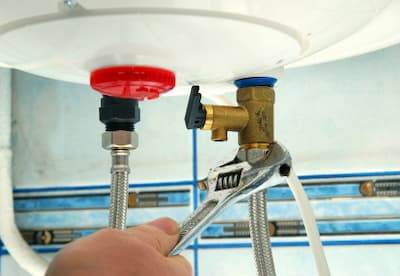Have you been trying to find related information involving How to Maintain Your Water Heater & Prolong its Life?

Hot water is crucial for everyday comfort, whether it's for a rejuvenating shower or washing meals. To ensure your hot water system runs efficiently and lasts much longer, routine maintenance is essential. This article provides sensible ideas and understandings on exactly how to preserve your home's hot water system to avoid disruptions and expensive repair services.
Introduction
Keeping your home's warm water system may seem daunting, yet with a couple of simple actions, you can guarantee it operates smoothly for years ahead. This overview covers whatever from comprehending your warm water system to do it yourself maintenance tips and recognizing when to employ professional aid.
Value of Maintaining Your Warm Water System
Normal upkeep not only extends the life expectancy of your hot water system however also ensures it runs effectively. Neglecting upkeep can result in decreased effectiveness, higher power expenses, and also premature failing of the system.
Indications Your Hot Water System Demands Upkeep
Knowing when your warm water system needs attention can protect against major issues. Keep an eye out for signs such as inconsistent water temperature, odd noises from the heating system, or corroded water.
Comprehending Your Warm Water System
Before diving right into maintenance jobs, it's valuable to understand the fundamental components of your warm water system. Generally, this includes the hot water heater itself, pipes, anode rods, and temperature level controls.
Monthly Upkeep Tasks
Normal monthly checks can aid catch small problems prior to they escalate.
Purging the Water Heater
Purging your water heater eliminates debris buildup, boosting effectiveness and lengthening its life.
Monitoring and Replacing Anode Rods
Anode rods prevent rust inside the storage tank. Evaluating and replacing them when broken is crucial.
Examining and Changing Temperature Level Settings
Changing the temperature level settings makes sure optimum performance and security.
Do It Yourself Tips for Maintenance
You can perform a number of upkeep jobs yourself to keep your warm water system in leading condition.
Checking for Leakages
Regularly check pipelines and links for leaks, as these can cause water damages and greater costs.
Testing Pressure Relief Valves
Checking the stress relief valve ensures it works appropriately and protects against excessive pressure accumulation.
Protecting Pipelines
Shielding hot water pipelines lowers warm loss and can conserve power.
When to Call a Specialist
While DIY maintenance is useful, some concerns call for specialist proficiency.
Complicated Problems Needing Expert Aid
Instances consist of significant leaks, electrical troubles, or if your water heater is consistently underperforming.
Routine Professional Maintenance Advantages
Specialist upkeep can consist of extensive examinations, tune-ups, and making sure conformity with safety and security criteria.
Conclusion
Normal maintenance of your home's warm water system is necessary for efficiency, longevity, and price savings. By following these pointers and understanding when to seek specialist assistance, you can guarantee a dependable supply of warm water without unforeseen disturbances.
How to Maintain an Instant Hot Water Heater
Before tinkering with your hot water heater, make sure that it’s not powered on. You also have to turn off the main circuit breaker and shut off the main gas line to prevent accidents. Also turn off the water valves connected to your unit to prevent water from flowing into and out of the appliance. 2. When you’re done, you have to detach the purge valves’ caps. These look like the letter “T” and are situated on either side of the water valves. Doing so will release any pressure that has accumulated inside the valves while at the same time avoid hot water from shooting out and burning your skin. 3. When the purge valves’ caps are removed, you have to connect your hosing lines to the valves. Your unit should have come with three hoses but if it didn’t, you can purchase these things from any hardware or home repair shops. You can also get them from retail stores that sell water heating systems. Read the user’s manual and follow it to complete this task properly. When the hosing lines are connected, open the purge port’s valves. 4. You should never use harsh chemical cleaners or solutions when cleaning your unit. Make use of white vinegar instead. It should be undiluted and you’ll probably use about 2 gallons. 5. Now flush your water heater. This task should probably take about 40 minutes. We can’t give you specific directions for this because the procedure is carried out depending on the type, model and brand of your heater. With that being said, refer to the user’s manual. 6. When you’re done draining the unit, you have to turn off the purge port valves again. Remove the hosing lines that you earlier installed on each of the water valves. Put the valve caps (purge port) back in their respective places and be very careful so as not to damage the rubber discs that are found inside these caps. 7. Now that everything’s back in place, check your user’s manual again to find out how to reactivate your water heating system. 8. Once it is working, turn one of your hot water faucets on just to let air pass through the heater’s water supply pipes. Leave the tap on until water flows smoothly out of it. https://www.orrplumbing.com/blog/2014/september/how-to-maintain-an-instant-hot-water-heater/

I hope you enjoyed our section on Water Heater Maintenance Tips You Can't Afford to Forget. Many thanks for finding the time to read our short article. Loved our blog? Please quickly share it. Let other people check it out. I cherish your readership.
Recurring Service Plans